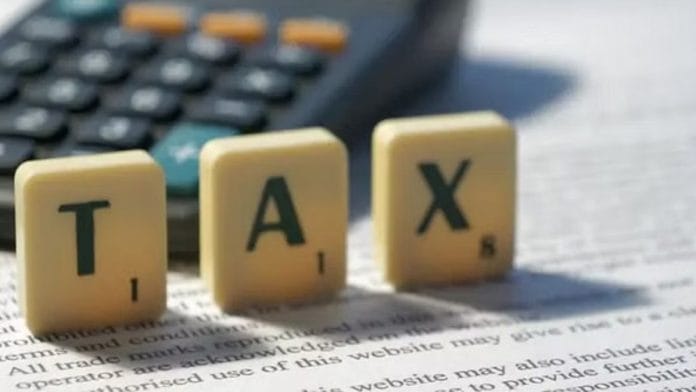It’s in the early days of a government formation when tough decisions are usually made. Rationalising the structure of direct taxes is an issue where a new government can resist populist concerns and take steps that may yield long-term benefits.
In FY23, the government raised almost Rs 7.1 lakh crore from individual income taxes, and it expects this figure to increase to Rs 10 lakh crore in FY25.
These are some of the best numbers India has ever seen. And yet, tough decisions on broadening the tax base, removing deductions and exemptions for certain classes of professionals, and lowering incidence at the top of the income pyramid may truly lead to improvements in our tax-GDP ratio.
Taxes distort people’s behaviour
A fundamental rule of human behaviour is that we will avoid what we think is not in our interest. One area where this plays out is the payment of taxes. Those of us who have a salary don’t have much choice but to stare at our net earning after tax deduction at source (TDS) every month.
But for everyone else, considerable time and effort is spent in figuring ways through which one’s tax outflow is minimised. Sometimes this is done through classifying transactions such that they fall into the least taxed bracket, showing expenses to square off other income, choosing to be a “consultant” instead of an “employee”, and sometimes just dealing in cash to avoid paying taxes altogether.
While this may yield benefits to the individual in the form of a lower tax burden, it does not achieve the objective for which the system was set up—to collect the maximum taxes to finance public goods and welfare expenditures while causing the least burden from taxation to individuals.
The economics literature on taxation is old and established. There is little doubt by now regarding the following proposition. The higher the tax rate, the higher the distortion in people’s behaviour. An increase in the tax rate may make you consume less, work less, or spend resources in trying to avoid the tax.
This is known as the “excess burden” imposed by the tax and is seen to rise with the square of the tax rate. This is also known as the “deadweight loss”, which is the added cost to taxpayers and society of raising revenue through taxes that distort economic decisions.
Thus, an increase in the tax rate might increase revenue. However, it also increases the “excess burden”, potentially negating some of the revenue gains from the increased tax rate.
The taxation structure that yields the best outcome is one where the tax base is broad: Everyone pays taxes, and the tax slabs, exemptions, and concessions are minimised. This allows for the lowering of taxes, thereby reducing evasion, and the time and effort spent in one’s tax management.
Tax compliance is as much about the stick as the carrot. Enforcement has to be tough, but it works best when people are incentivised to obey the law.
Also read: India doesn’t need new taxes to uplift its poor. Existing welfare schemes are doing well
The Indian experience
The Indian history of direct taxes bears out the futility of high tax rates. As a paper written by economist M Govinda Rao points out, the marginal tax rate on individuals with income above Rs 20 lakh was 97.5 per cent in the 1970s. At that point, less than one per cent of the population paid the tax; the revenue from individual income tax was just about 0.8 per cent of GDP. As the tax rate became rationalised, tax compliance got better.
While the marginal tax rate was down to 30 per cent by the mid-1990s, there were still some complications in the form of standard deductions and tax incentives for things such as financial savings in specific instruments or home loan payments, among others. These create their own set of distortions in the financial portfolios of households, with savings being channelled to insurance and the public provident fund, which may not always be the best decision from a risk-return perspective.
More recently, the new tax regime has made a move towards lowering the tax rate by doing away with several deductions. However, this is still optional, and there are more tax brackets in the new regime, adding a different layer of complication.
There are two areas where the numbers are still disappointing. According to income tax data, there were about 6.4 crore individual taxpayers in FY22. Of these, about 4.3 lakh individuals filed returns with gross total income greater than Rs 50 lakh. Our intuition would suggest that there continues to be considerable tax evasion in India.
The second is the large number of people who do not fall into the tax bracket at all because those earning up to Rs 3 lakh a year pay no tax. As of FY22, between 80 lakh and one crore individuals with income less than Rs 3 lakh filed returns. As inflation rises, there is tax bracket creep, and more people eventually end up in the higher tax brackets.
This has been one reason to continue with the low tax base strategy in India. However, with inflation targeting in place, the tax bracket creep is going to be limited. This low tax base at the bottom of the income pyramid is as much of a problem as the low count of individuals at the top of the pyramid.
Also read: Lending more to households. Not enough data to call it a sign of prosperity
Where next?
Multiple committee reports have looked at the direct tax structure in India and recommended rationalisation strategies. These have been politically very difficult to implement. All the more reason why a new government should seize the opportunity for reform.
Renuka Sane is managing director at TrustBridge, which works on improving the rule of law for better economic outcomes for India. She tweets @resanering. Views are personal.
(Edited by Prasanna Bachchhav)






